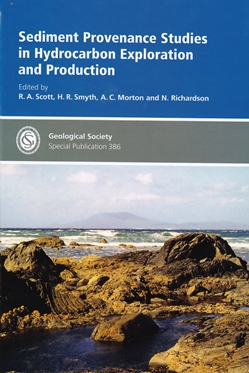
This special publication volume comprises 20 papers presented at the ‘Sedimentary Provenance Studies in Hydrocarbon Exploration and Production’ conference at the Geological Society of London in December 2011. The book highlights that sedimentary provenance studies can be of potential use throughout the hydrocarbon exploration, development and production life cycle.
In the exploration phase, provenance can give an insight into sand presence, distribution and quality. During development, mineral and chemical techniques can be a powerful tool in aiding reservoir correlation and zonation, particularly where biostratigraphy may be less effective. It also provides an understanding of reservoir diagenesis, which can have a major impact on field and individual well productivity.
An impressive feature is that the papers cover a wide range of geological basins and adjacent source areas from around the world. These include prolific hydrocarbon basins such as the North Sea and Gulf of Mexico, and less developed ones including the Myanmar Central Basin and Fundy Basin in Canada. A wide range of sedimentary provenance methods is discussed in various papers, including heavy mineral analysis, mineral and wholerock geochemistry, geochronology and drainage capture analysis.
The papers have been subdivided into four themes. The initial overview theme looks at a wide range of sedimentary provenance methods, relating their application to the North Sea Basin and to individual fields and reservoirs. The section consists of only one paper, but it is the most comprehensive in the book.
The next theme covers provenance diagenesis and reservoir quality. Several case histories demonstrate how an understanding of sediment source terrains and transportation can give insight into why reservoir sands in apparently similar geological settings and depths can show major differences in reservoir quality.
The third theme discusses provenance studies linking sediment to source sediment. There is a timely reminder of benefits of understanding the sediment source area and its tectonic history, when searching for hydrocarbons.
The final theme covers the development of techniques and data handling. Advances in analysis methods, workflows and the use of comprehensive databases indicate that the use provenance studies may increase in the future.
Many of the papers contain large amounts of data analysis and are therefore hardly ‘light reading’ for the non-specialist geologist. They do, however, provide a useful collection of case histories and methods that many geologists may find applicable to their work. On a final note, the publication acts as a reminder of the value of understanding regional geology during hydrocarbon exploration and production.
Reviewed by Tim Tubby
SEDIMENT PROVENANCE STUDIES IN HYDROCARBON EXPLORATION AND PRODUCTION by R A SCOTT, H R SMYTH, A C MORTON & N RICHARDSON (Eds). 2014 Geological Society Special Publication #386. ISBN: 978-1-86239-370-7 420pp. List Price: £100 (£50 to Fellows). W: Bookshop